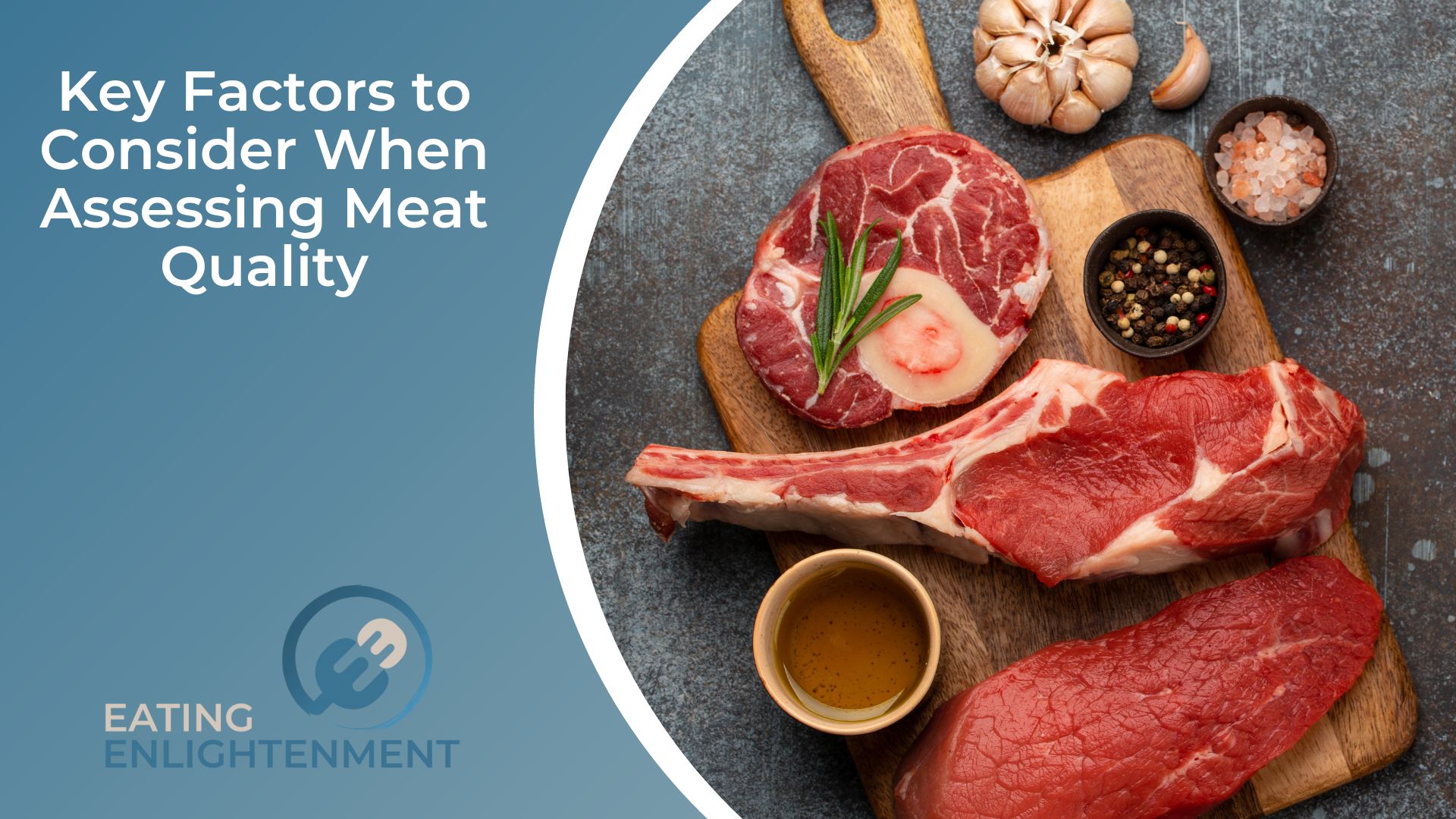In the realm of culinary arts and personal nutrition, the quality of meat you use can significantly impact both the taste of your dishes and the health benefits you derive from them.
Whether you’re a professional chef seeking to impress discerning customers or a home cook looking to create a nutritious meal for your family, understanding the key factors that determine meat quality is a must.
This guide will delve into 6 pivotal aspects you should consider when assessing meat so that every bite you take is nothing short of exceptional.

Origin of the meat
For meat lovers, understanding the origin of their meat can elevate the dining experience. Did the animal roam free in a pasture, or was it confined in a feedlot?
Was the animal fed a natural, varied diet or an unnatural mix of additives and hormones? These factors directly impact the quality of the meat, including its flavor, texture, and nutrition.
For instance, cajun meat from free-range chickens would have a more robust, gamey flavor compared to meat from factory-farmed birds. If you’re in the market for cajun meat, for example, you can check sites such as shop.lacrawfish.com/Cajun-Meats-Boudin for a variety of options. Once you know where your meat comes from and how it was raised, you can make informed choices about what you consume and support more responsible farming practices.
Color
Did you know that the color of meat can tell you a lot about its freshness and quality? When it comes to beef, it should be a bright and vibrant red color.
This indicates that the meat is fresh and of good quality. On the other hand, pork should have a slight pink hue to it. If the meat is gray or brown, it may be an indicator that it’s not fresh and might be spoiled.
Veal and lamb should also have a pinkish-red color but with a slightly lighter shade than beef. When buying poultry, look for meat that has a consistent white or light pink color. Any discoloration could mean the meat is not fresh and may pose health risks.
The next time you’re at the meat counter, remember to examine the color of the meat to ensure that you’re getting the freshest and highest quality cuts available!
Marbling
In short, marbling refers to the white specks of fat that are dispersed throughout the muscle tissue of the meat. It provides flavor and tenderness to the meat, making it more sought after and desired by many. As a rule of thumb, the more marbling a cut of meat has, the better quality it is.
Note, however, that marbling isn’t just for aesthetics; it enhances the flavor and tenderness of the meat by allowing the fat to melt and lubricate the muscle tissue as it cooks. As a seasoned pro, you can determine the level of marbling by looking at the raw meat’s surface. The key is to look for thin, evenly distributed lines of fat throughout the cut.
Age of the animal
An animal’s age at the time of slaughter plays a significant role in meat quality. Generally, beef and lamb are considered prime for consumption between 18 months and two years old. Poultry, on the other hand, is usually slaughtered before reaching one year of age. As animals get older, their muscle tissue becomes tougher due to increased physical activity and reduced fat content.
You might think that younger animals would be the best choice for tenderness and flavor, but it turns out that there’s more to the equation than just age alone. Though younger animals do have softer, milder meat, older animals can offer something equally enticing: a richer, more robust flavor. It’s all about finding the right balance for your taste buds, and taking the age of the animal into account is just one way to make sure you’re getting the best meat possible.
Packaging and Expiry Date
You should never overlook the packaging and expiry date when assessing meat quality. Ideally, meat should be sold in airtight packaging to prevent exposure to bacteria and other contaminants. Vacuum-sealed packaging is even better as it keeps the meat fresh for longer periods.
Always check the expiry date before purchasing any meat products. Eating expired or spoiled meat can lead to food poisoning and other health risks. If you’re buying meat from a butcher, don’t be afraid to ask when the meat was packaged and what the recommended consumption date is. Even pay attention to any signs of damage or leaks in the packaging as this can also affect the quality of the meat.
Smell
You must know that meat should smell mild or not at all. A strong or foul odor can actually be a sign that the meat has spoiled and should not be consumed. Keep in mind that different types of meats may have slightly different smells, so it’s important to use your best judgment.
If you’re ever unsure about the freshness of your meat, it’s always better to err on the side of caution and choose a different cut. By keeping your nose open and trusting your instincts, you’ll be able to ensure that you’re always preparing meals with the freshest ingredients possible.

Assessing the quality of meat involves a detailed look at numerous factors: from understanding the origin of the meat and examining its color and marbling to considering the age of the animal and paying close attention to packaging and expiry dates as well as the smell of the meat.
Armed with this knowledge, you can navigate the meat aisle or butcher shop with confidence. Take your time to make informed decisions when buying meat—every bite matters.



